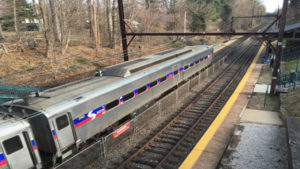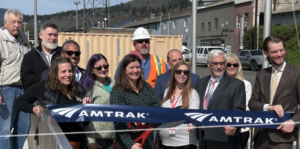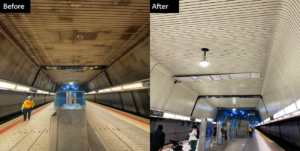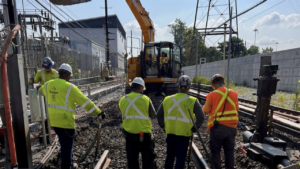LACMTA released DEIS for proposed Eastside rail extension
Written by Jenifer Nunez, assistant editor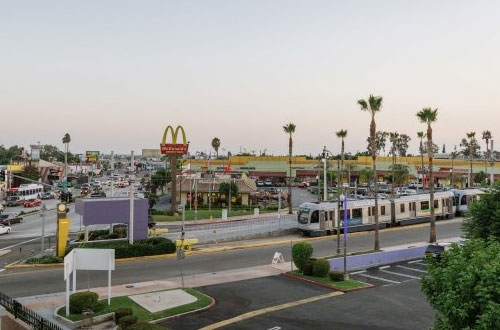
A Draft Environmental Impact Report/Environmental Impact Statement (EIR/EIS) on a proposed extension of the Gold Line light-rail system from East Los Angeles to either South El Monte or Whittier was released by the Los Angeles County Metropolitan Transportation Authority (LACMTA).
The Draft EIR/EIS studied the Eastside Transit Corridor Phase 2, an extension of the existing Gold Line connecting Pasadena and East Los Angeles through Union Station to communities where commuting to work is expected to grow by 32 percent by 2035 and peak period travel times to increase 25 percent in the morning and 34 percent in the afternoon by 2035.
The Eastside Transit Corridor Phase 2 includes proposals known as the SR 60 Alternative and the Washington Boulevard Alternative. The SR 60 Alternative proposes a 6.9-mile extension of mostly elevated tracks running adjacent to the 60 freeway to South El Monte with four proposed new stations at Monterey Park, Montebello and South El Monte. The Washington Boulevard Alternative would extend the Gold Line 9.5 miles down Garfield Avenue, turning east on Washington Boulevard before ending in Whittier. The mostly at-grade alternative would include six proposed new stations serving Monterey Park, Montebello, Pico Rivera and Whittier. Each of the two options would begin at the Eastside Gold Line’s current terminus at Atlantic and Pomona boulevards in East Los Angeles.
Estimated ridership for the SR 60 Alternative is 16,700 boardings each weekday with a cost estimate of $1.271 billion to $1.296 billion, according to the draft study. Estimated ridership for the Washington Boulevard Alternative is 19,900 weekday boardings with an estimated cost of $1.425 billion to $1.661 billion.
LACMTA staff is scheduled to recommend a Locally Preferred Alternative to the board of directors in November and members will decide how to proceed.
Under LACMTA’s long-range plan, the second phase of the Metro Gold Line Eastside Transit Corridor Phase 2 is not scheduled to be in operation until 2035. However, LACMTA decided to move ahead with the draft study should funds be secured that would allow the agency to build it sooner.

